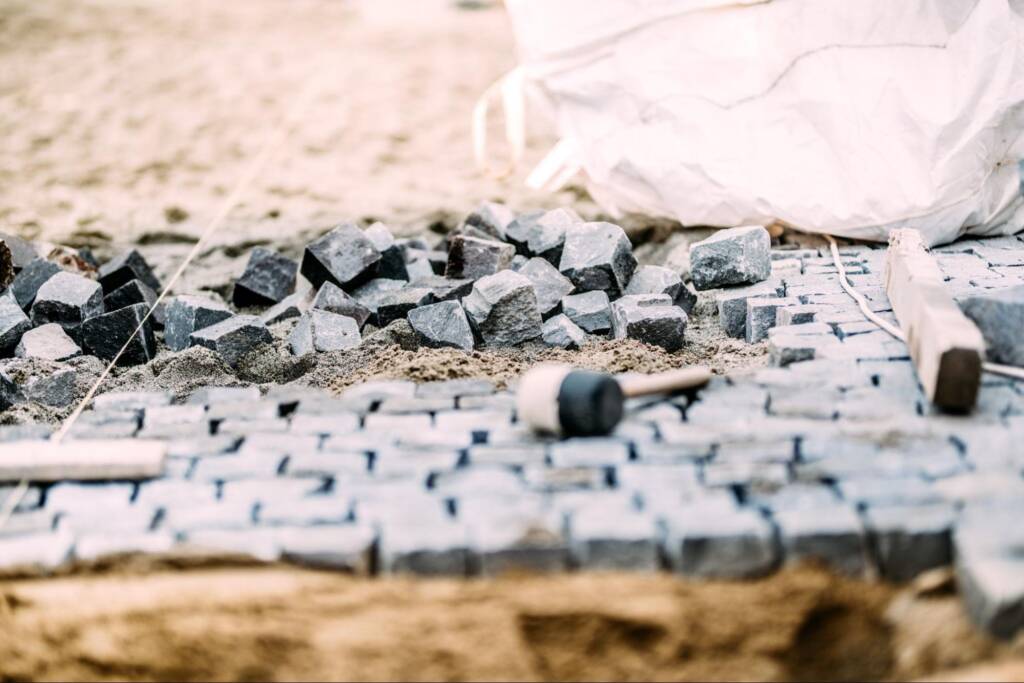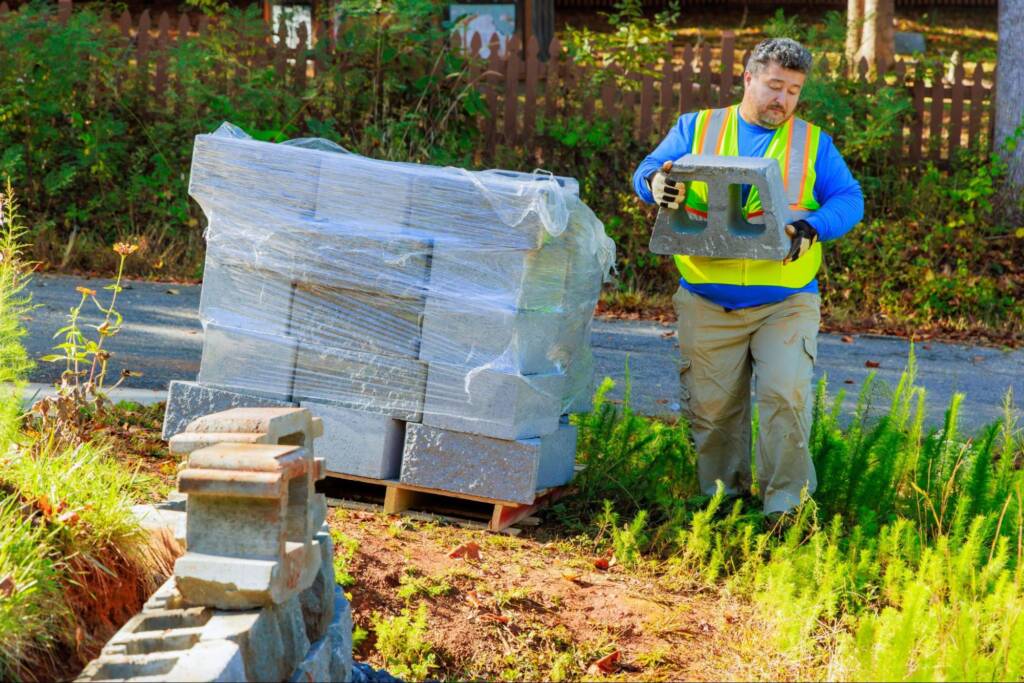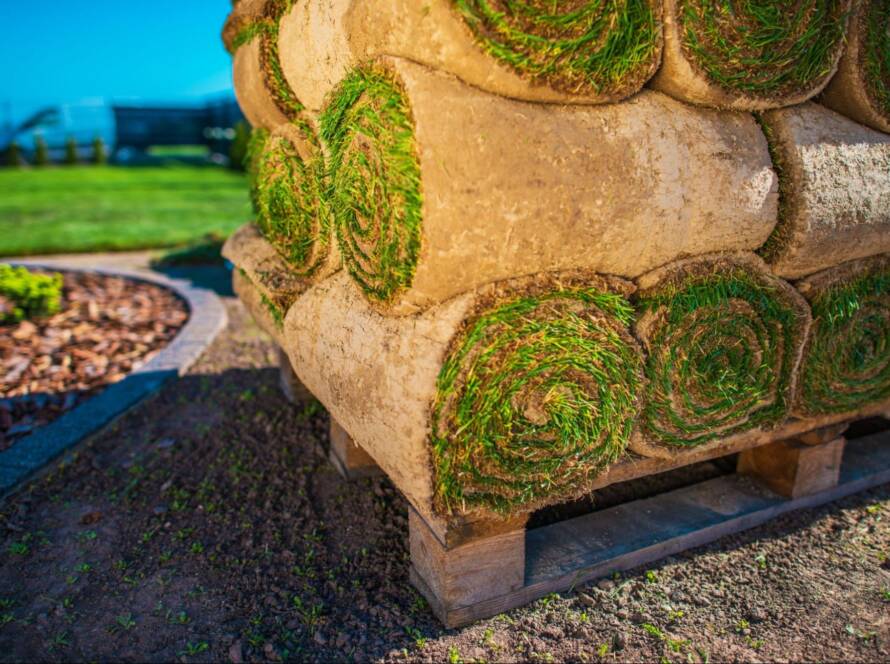Landscaping isn’t just about plants. It’s also about structure, stability, and how outdoor spaces feel and function on a daily basis. Whether creating a backyard retreat or improving curb appeal, hardscape materials shape the bones of your design. The surfaces you walk on, the walls you lean against, and the patios you gather on all come from choices made early. Picking the right ones sets the tone for how your space looks and lasts.
Understanding Hardscape Materials in Landscape Design
Not every beautiful yard grows from the ground up. Some of it is built. Hardscape materials include everything non-living in a landscape—what you walk on, sit on, and use to shape space. These elements support plant life while giving outdoor areas form, function, and finish. Choosing the right materials lays a strong foundation for everything that follows.
What Are Hardscape Materials?
Hardscape materials are the solid pieces of any outdoor design. They include pavers, concrete, stone, gravel, brick, and wood. These elements support structures like patios, walkways, walls, driveways, and fire pits. In contrast, softscape includes growing things—grass, trees, shrubs, and flowers. You need both, but hardscape gives the landscape its structure and usability.
Why Your Material Choices Matter
Your landscape needs to work, not just look good. Materials affect how well the design holds up over time. A poor choice can result in costly repairs or replacement. Good choices save time, reduce maintenance, and withstand your local climate. They also shape how people move, gather, and interact in the space.
Factors to Consider When Choosing Hardscape Materials
Hardscape materials aren’t all created equal. Some last decades, others wear out fast. Some fit your region’s climate; others fight it. Picking the right one means balancing practical and personal needs while keeping the long game in mind.
Climate and Weather Resistance
Climate affects how materials perform year-round. Some crack under freeze-thaw cycles, while others fade in intense sun. Wood can rot in humid areas, and smooth stone becomes slippery when wet. You need to consider drainage, surface grip, and temperature fluctuations. Always choose something that suits your local weather, not just your style.
Budget vs. Long-Term Value
The cheapest option often isn’t the smartest one. Concrete may cost less upfront, but it requires more repairs in harsh climates. Stone costs more to install but usually lasts longer with less upkeep. Labor is also part of the price; some materials are more complicated to install and more expensive to replace. Don’t just shop by cost—consider value over time.
Style and Visual Appeal
Hardscape materials should match your home’s personality. A modern house might need smooth pavers; a rustic one looks better with rough stone. Color and texture also matter; a gray patio might wash out next to cool plants. Think about how materials contrast or blend with the softscape. The right match adds polish without stealing the show.
Function and Use
How you use the space should shape the materials you choose. Driveways need to hold weight, so gravel alone won’t cut it. Walkways should feel safe, not slick. Patios require a flat, stable surface to prevent furniture from wobbling. Always match the material’s strength and surface to its use.

Common Hardscape Materials and Their Best Uses
Every material has pros, cons, and ideal uses. Some fit high-traffic areas, while others serve better as accents. Knowing where each material shines can save time, money, and stress. It’s not just about what you like but what works.
Concrete: Versatile but Demands Care
Concrete is widely used due to its flexibility and affordability. It can be poured into any shape, texture, or color to achieve the desired effect. But it’s not invincible—it cracks in cold climates and fades in harsh sun. Sealing helps but adds to upkeep. Use concrete where budgets are tight and shapes are simple.
Pavers: Flexible and Easy to Repair
Pavers come in many types—concrete, brick, or stone and are easy to customize. Their most significant advantage is repair: damaged pieces can be replaced quickly. They drain well and hold up under heavy use if installed correctly. Pavers are ideal for patios, walkways, and even driveways. Just make sure the base is solid to prevent shifting.
Natural Stone: Timeless and Durable
Natural stone adds class and character to any yard. It includes bluestone, slate, granite, and limestone, each with a unique texture and tone. Though expensive, stone handles weather well and rarely needs replacing. Installation takes skill and muscle, which boosts the labor cost. Use it where you want lasting beauty and high-end appeal.
Gravel: Low Cost with Rustic Charm
Gravel is easy to install and suits informal settings. It’s great for paths, driveways, or around fire pits. But it shifts easily and needs barriers to stay in place. Some types offer better drainage, making them smart for wet areas. Gravel works well if you want a relaxed, natural feel without spending big.
Brick: Classic With Old-World Appeal
Brick adds warmth and a timeless look to outdoor spaces. It works well for paths, edging, and cozy patios. Reclaimed bricks are eco-friendly and full of charm. However, brick can shift over time if the base isn’t solid. Use brick when your design calls for tradition or vintage flair.
Wood: Warm but High Maintenance
Wood brings natural warmth that other materials lack. It’s often used for decks, fences, planters, and edging. But it needs sealing and may rot or splinter over time. Moisture and pests can shorten its life if not maintained. Use wood when you want to soften stone-heavy designs or add texture.
Mixing Hardscape Materials for Impact and Function
One material rarely does it all. Combining types adds flexibility and improves function. Smart pairings can also bring texture and visual interest to a flat yard. Use contrast, not clutter, to create beautiful and functional outdoor spaces.

Creating Visual Contrast
Blending different textures and colors adds energy to outdoor layouts. Pairing rough stones with smooth pavers creates a visually rhythmic effect. Gravel paths with stone borders naturally break up large spaces. These contrasts not only look good, but they also guide movement and mark areas. Done right, contrast adds character without going overboard.
Combining for Practicality
Different materials offer different strengths. Use stone where weight matters and wood where you want comfort. Gravel is perfect for drainage gaps between pavers. You can use concrete for a patio and wood for a deck extension. Combining materials helps you match form with function.
Cohesion With Softscape
The hardscape shouldn’t overpower the plants—it should frame them. Materials should echo the colors and tones found in nature. Stone paths look best surrounded by green. Wood planters can match tree bark or mulch. Everything should feel like it belongs together, unlike pieces from different yards.
Avoiding Mistakes When Selecting Hardscape Materials
Even with good intentions, it’s easy to make mistakes. Mistakes often result from rushing, copying trends, or ignoring context. Some errors are cosmetic, and others are expensive to fix. Awareness is the first step in making more informed decisions.
Consider Local Climate
Your local weather can quickly destroy the wrong material. Don’t use porous stone in rainy areas—it crumbles. Skip wood decks in regions with termites or heavy moisture. UV light fades some surfaces faster than others. Always check how well a material fits your area, not just your design.
Prioritize Looks Over Function
A patio might look stunning in photos but fail in real life. Shiny tiles might get slippery in the rain, and a driveway surface might crack under weight if it’s too thin. Safety, durability, and use should lead the decision. Style matters, but function must come first.
Don’t Skimp on the Base and Installation
Even excellent materials fail without proper prep. A weak base leads to cracked concrete, sunken pavers, or shifting bricks. DIY errors often cost more to fix than professional installs. Materials need a stable, well-drained foundation to perform well. Invest in a solid start, not just a flashy finish.
Choosing Sustainable Hardscape Materials That Last
Good design considers the environment and the future. Sustainable hardscape materials help reduce waste and often last longer. They also work with nature, not against it. Eco-friendly options exist at all price points and styles.
Recycled and Reclaimed Options
Recycled materials give old products new life. Bricks from demo sites, crushed concrete, or recycled rubber pavers reduce landfill waste. They often bring more character than new stock. These options are usually less expensive and just as effective. Plus, using them tells a story and supports green building.
Permeable Materials for Drainage
Permeable surfaces allow rain to soak into the ground, reducing runoff, flooding, and erosion. Gravel, porous pavers, and spaced bricks all help the soil breathe. These materials also help meet local stormwater codes in many cities. They’re both innovative and sustainable.
Choose Hardscape Materials That Create Beautiful Landscapes
Think about the spaces you remember—those patios where stories unfolded, that walkway leading to laughter, the firepit that turned strangers into friends. None of that happened by accident. The hardscape materials beneath your feet shaped those moments long before they happened. It isn’t just about stone, wood, or concrete. It’s about building something solid enough to hold your best days. Start with purpose, finish with intention, and let every square foot mean something.
Build smarter from the ground up—head to the Brady Landscaping & Construction blog for real-world tips and design inspiration.

